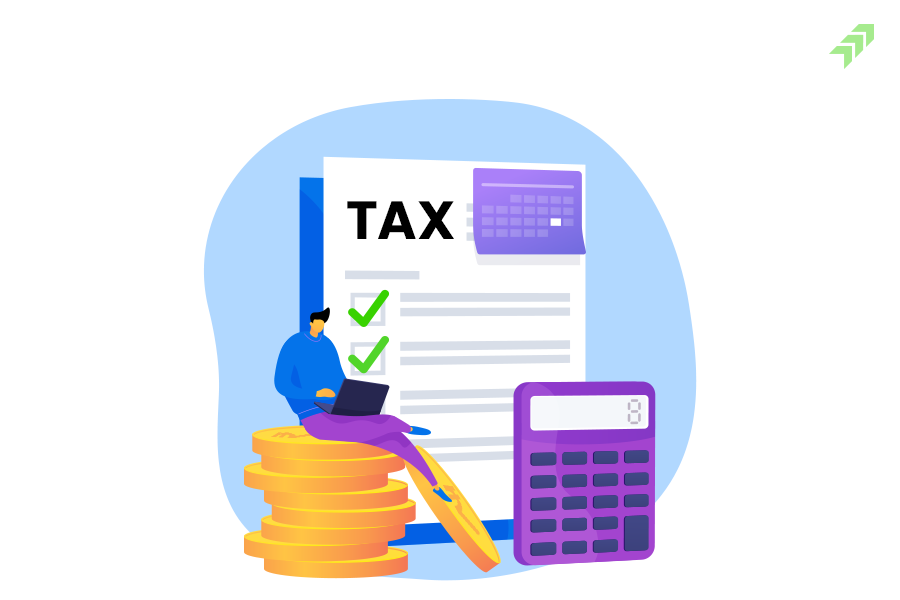Volatility in the stock market is a very common phenomenon traders face while buying stocks or trading in the future & options (F&O) market. And in the options market volatility plays a major role in changing the price of the option chain of underlying stocks or indices.
Trading options can be very risky compared to the cash market. The Nifty option chain gives wide options for traders to make a position in the contract of different strike prices and make extraordinary money during the expiry of that contract. The price of that option contract is highly influenced by the implied volatility that we are going to discuss today.
Also Read: NSE Option Chain Analysis: How It Works & What Does Indicate
What Does Implied Volatility Mean?
Implied volatility or IV is the expected volatility of the stock throughout the option. In option trading IV is used to determine and forecast the possible price movement of the underlying security or indices trading in the future and option market.
Implied volatility means the market or underlying stock can move in any direction either upward or downward. The IV is influenced by many factors like demand and supply, sentiments, fear, and actions of the company. And when the market is bullish implied volatility is reduced significantly, while when investors' sentiments are low and the market is bearish, IV rises.
How to Calculate Implied Volatility?
Calculating the implied volatility is a very complicated process, as you need various data that have to be entered into the Black-Scholes formula and back-solving to find out the value of the volatility. However, there are various methods to calculate the implied volatility. And the simple one is iterative search, or trial and error to find IV value.
Implied Volatility Formula:
C = SN (d1) – N (d2) Ke -rt
Implied Volatility Calculation Example
Suppose the value of an at-the-money call option of a company XYZ is Rs 32.3 when the stock price is Rs 831.1, the strike price of the option is Rs 800, while the risk-free rate is 0.25% and the time to expire the contract is one day.
Here, the implied volatility can be calculated by using the Black-Scholes model with the parameters given above, and by using the different values of implied volatility in the option pricing model to know the IV for a particular underlying stock or index.
For example, let’s take the implied volatility of 0.3. This gives the value of the call option of Rs 31.4 which is too low. As the call options are increasing function, means volatility needs to be higher. Now try 0.6 for the volatility, this will give a value of Rs 33.
For the call option, that is too much high. Finally, try the 0.45 for implied volatility which will give the value of Rs 32 for the price of the option, hence the implied volatility here is between 0.45 and 0.6. And this iterative search trial and error procedure can be performed multiple times to find out the more precise IV which is 0.541, or you can say 54.1%.
Historical Implied Volatility Data
The above formula can be used to calculate the current IV of the option stock or index, but you can also take the previous dates' data to find out the historical implied volatility. Historical volatility is also called realized volatility for a given period to know or check the past movements of stock prices. This will help to know and compare the current implied volatility with historical volatility.
If you consider from the example illustrated above, if the volatility of the XYZ Company is 23.6%, and when you check the past 30 days and find out that the historical volatility is calculated to be 23.5% that represents the volatility is at moderate levels.
If you compare this IV with the current IV, you should consider that there may not be any chances or any event that could affect the stock price beyond this implied volatility. This will help you to make the right trading strategy while making positions in options.
Implied Volatility Chart: Nifty Future

What is a Good Implied Volatility for Options?
You cannot find a perfect implied volatility for an option, because it keeps fluctuating during the life span of the option. IV simply represents the expected volatility of the stock or index over the life of the option. And when the expectations change, the option premium also gets changed accordingly. IV is directly affected by the market’s expectation of the direction of the stock’s price and the demand and supply of the same underlying option.
And when the market expectations increase, the demand for that options chain also increases, resulting in the implied volatility also rising. Hence, an option with a high IV will have a high price premium. While on the other hand, when market expectations decline, the demand for the option also decreases, resulting in the IV also decreasing. Here, this kind of option contract has a low premium.
The good thing about implied volatility is rise and fall of implied volatility helps to know how cheap or expensive the time value is to the option, which can lead to a decision factor in the success of an options trade. The good implied volatility is anything below 30% and you can pick a stock that is mega-cap stocks, and with monthly option contracts.
What is Considered High Implied Volatility for Options?
As there is no such specific range of low or high implied volatility for options, it may be different from underlying security or stock-to-stock as per the movement in the stock market. Some of them are highly volatile, while few stocks are less volatile. When comparing the high IV for an underlying security always check the historical implied volatility and compare.
Suppose, the implied volatility of a stock XYZ remains between 30% to 60% during the past 52 weeks and now the IV of the same stock is trading at 45%, this means the IV rank of this XYZ Company is at 50.
In this case, if the IV of XYZ is trading at 60%, then the implied volatility of this stock would be ranked at 100, which indicates the IV in XYZ was trading at the highest levels when compared with the past 52-week implied volatility range.
However, high implied volatility options are considered at the highest when the IV rank of any stock is greater than 50, and the extreme levels in IV rank would be 80 or beyond that. Conversely, when the implied volatility rank is at the lowest or less than 20, then it could be considered an opportunity to buy the options with the least volatility in the stock.
What Affects Implied Volatility?
The implied volatility is affected by many factors depending on the indices or stocks liquidity or volume of trade but the two are the most important factors that affect the implied volatility.
Also Read: Importance of Volume in Technical Analysis: Use & Role in Trading
Demand & Supply: The implied volatility primarily fluctuates with the rise and fall in the demand of a particular strike price option. When demand is high, IV will increase and when the demand is low, the IV will also fall. Higher demand means the premium is also high, as the option poses a higher chance of payoff. While on the other hand, low demand causes prices, and IV to decline, as the supply is high in the market. When the price and IV fall, the option is considered not necessary, resulting low premium.
Time Value of Money: This is another important factor affecting implied volatility. The time value in option trading means, the length of time left before the option reaches its expiry date. Options having short expiry periods be likely to have a low IV, and long expiry period options tend to have a high IV. As the IV indicates the wing of price movement, not the direction of stock. The longer the time remains for the expiration, the stock needs a longer time to move either side which makes it risky for the traders but offers a better potential to make the trade position highly profitable.
How to Interpret Implied Volatility?
To use implied volatility, understanding and interpreting its mechanism is very important. Here you can find how to interpret implied volatility that you can use for trading in options.
Predict the Future Price Movements: Higher IV, means there is a greater chance of significant price fluctuations in the underlying asset. It indicates that market participants anticipate the increase in uncertainty and potential price swing.
Also Read: Swing Trading Strategies Indicators & Best Stocks
Determine the Premiums of Options: The implied volatility is a very important factor in determining the premiums of options. Higher implied volatility means higher option premiums because the rise in uncertainty increases the supposed to be the value of the options as a risk management tool in trading.
Relate the Value Options Contracts: Using the implied volatility, you can compare the perceived volatility of different underlying stocks or index options contracts. By evaluating the IV of similar options across different underlying assets, or expiration dates, you can identify the potential opportunities for undervalued options contracts of varied strike prices.
Also Read: What is Strike Price in Options & How to Select Strike Price
Why Implied Volatility is Important in Options Trading?
Understanding the importance of implied volatility allows traders to use this in options trading for better returns. IV indicates the expected movements in the price of the premium of the option contract and how much can go up or down during the specific period.
IV reflects the change in the demand and supply dynamics in the market. IV is expressed in percentage format and when the demand for an underlying option rises, the IV also increases, which will increase the price of the option premium. And similarly, when the price falls, IV also declines resulting in the premium of the option decreases respectively.
Each options are sensitive towards the implied volatility, Short-term options are less sensitive towards IV, while long-term options are more impacted by market changes, and have higher IV sensitivity quotients. Here the chances of successfully executing the trade are dependent on how accurately you can predict the changes in the implied volatility.
Using the IV in option trading is important, just like insurance where investing in an asset there are several risks, then coverage will be also expensive. Insurance companies charge a higher premium for coverage if there is a high risk, similarly, in the stock market, in options trading if there is a high risk in trading in an option contract then the premium will be also high.
And stock market is an unpredictable place that can be affected at any time due to natural disasters, unfavourable economic scenarios, corporate earnings announcements and other possible factors. And in the stock market options become more expensive due to the higher risk and uncertainty of such unpredictable events in the future.
And when trading becomes unpredictable, it also increases the implied volatility, which means the IV will be expanding, as option prices are also likely to increase. While on the other hand, when the market is relatively stable, it means IV is contracting, as there is a decrease in the implied volatility and option prices.
How to Use Implied Volatility in Options Trading?
Implied volatility can be used in options trading as hedging in cash position. If the IV of an option contract is relatively lower than the IV for the entire year, means you can buy options at a low premium and wait until IV moves up. And when IV moves up, the option premium value goes up, also enhancing the overall value of the option to the upside.
You can use the IV for planning and buying the option contracts. Keep screening the market where it is heading, if an option is trading with high volatility, you can sell the option. As IV increases, the option premium becomes expensive, and it would not be a preferred buying choice among the traders, and here you can sell the options.
IV helps you to find out a range between which the option price is likely to fluctuate. And as per the market experts, you should always plan your options trading strategy after checking the market volatility and taking the cues from the IV chart.
Also Read: Best Option Strategy for Bearish Market: 7 Option Strategies
Stocks with High Implied Volatility
To find out the stocks with high implied volatility, you can use various tools where you have to put the values required to calculate the IV of the underlying security. However, there are various online platforms that calculate IV daily automatically where you can find the implied volatility of main indices and stocks trading in the F&O segment.
However, finding the high IV stocks would be not enough to trade in options profitably. You need the expertise to create a feasible option strategy that can work while considering the IV of the underlying security and as per the market sentiments.
Also Read: What is Profit Booking in Stock Market: Rules & Best Strategy
Understanding the market trend, and various other factors affecting the stock market and finally, the technical factors like open interest in the contract of an underlying security and the price change etc. Applying all these technical indicators and creating the right option strategy can only make it possible to earn from the stock market options strategy.
Also Read: What to Know Before Investing in Stocks: 10 Things to Consider
Here you can take the help of experts, who will suggest the right stocks or underlying security for trading or investing. Moneysukh offers a trading platform with stock recommendations for intraday trading or short-term and long-term investment.
Also Read: How to Do Intraday Trading: Best Stocks, Charts & Strategies
Moneysukh offers one-stop trading and investment solutions for equity, commodity and currency markets. You can open your trading and demat account here with a simple and hassle-free account opening process. Moneysukh is also Algo-based trading to give better returns while trading and investing in the stock market at the best pricing.


















No comment yet, add your voice below!